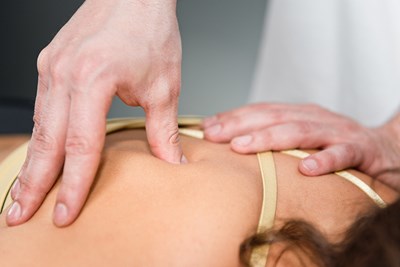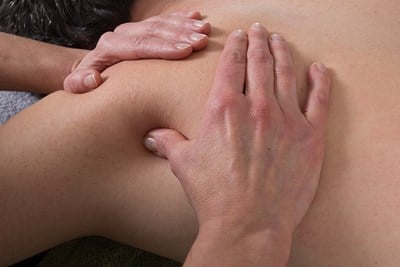Trigger points (TrP) can be more frustrating than normal causes of pain. In most cases, when you have pain somewhere, that’s the spot that needs attention. This isn’t true for trigger points, though, which cause referred pain to localized muscles or groups of muscles. For a different kind of issue, it can take a different kind of treatment. Here’s a description of a few different types of trigger point therapy.
What is Trigger Point Therapy?
Trigger point therapy uses a variety of techniques to help manage and prevent trigger points. Ultimately, a trigger point therapist’s main goal is to find the trigger point -- the source of the pain. Only then can treatment begin to be successful -- if you don’t know where the pain is coming from, you can’t fix the cause of the pain. Trigger point therapy can be different for everyone, varying according to the cause, placement, and specific symptoms of your particular trigger point or points. Regardless of what types of therapy you and your therapist choose to utilize, your therapist isn’t the only one who is going to have to work for your recovery.
Spray and Stretch
One of the least-fancy means of trigger point therapy is for your caretaker to simply use their fingers or an instrument to probe for trigger points. Once found, the root of this treatment is to press firmly, and pressing firmer as the trigger point begins to give away, not only releasing itself, but allowing the muscles to release as well.
Spray and stretch therapy, however, takes a little bit of a different spin. The therapist sprays a vapor coolant spray, such as ethyl chloride, onto the skin. These very cold sprays are thought to work not only as a sort of anesthetic to the muscles, but also as a sort of distraction for the muscles. Then, your therapist will you have stretch lightly in specific ways. The coolant spray is intended to keep the muscle from noticing the pain while the muscle is stretched to its normal length. This can deactivate trigger points, help get rid of the referred pain they cause, and reduce any muscle spasms that may also be occurring.
Foam Rollers
A great option for at-home treatments you can learn from your therapist involves foam rollers. Foam rollers are cylindrical devices in varying sizes you can use to rub areas where you have trigger spots or where trigger spots are prone to develop. What may be particularly beneficial for your trigger point is GRID foam rollers. Expert trigger point therapists appear to love this particular design. Rather than being completely flat, GRID rollers have a 3D grid worked into the surface. This is intended to allow blood and oxygen to flow to the muscle while using the roller, allowing the trigger point to heal.
There are three recommended ways to use your trigger point GRID roller: rolling, which involves rolling the cylinder against the muscle; spanning, in which the muscle is moved back and forth across a stationary roller; and stretching, which involves stretching the muscle across the stationary roller. If you are finding your current trigger point therapy isn’t effective, talk to your therapist about alternatives that may work better.



